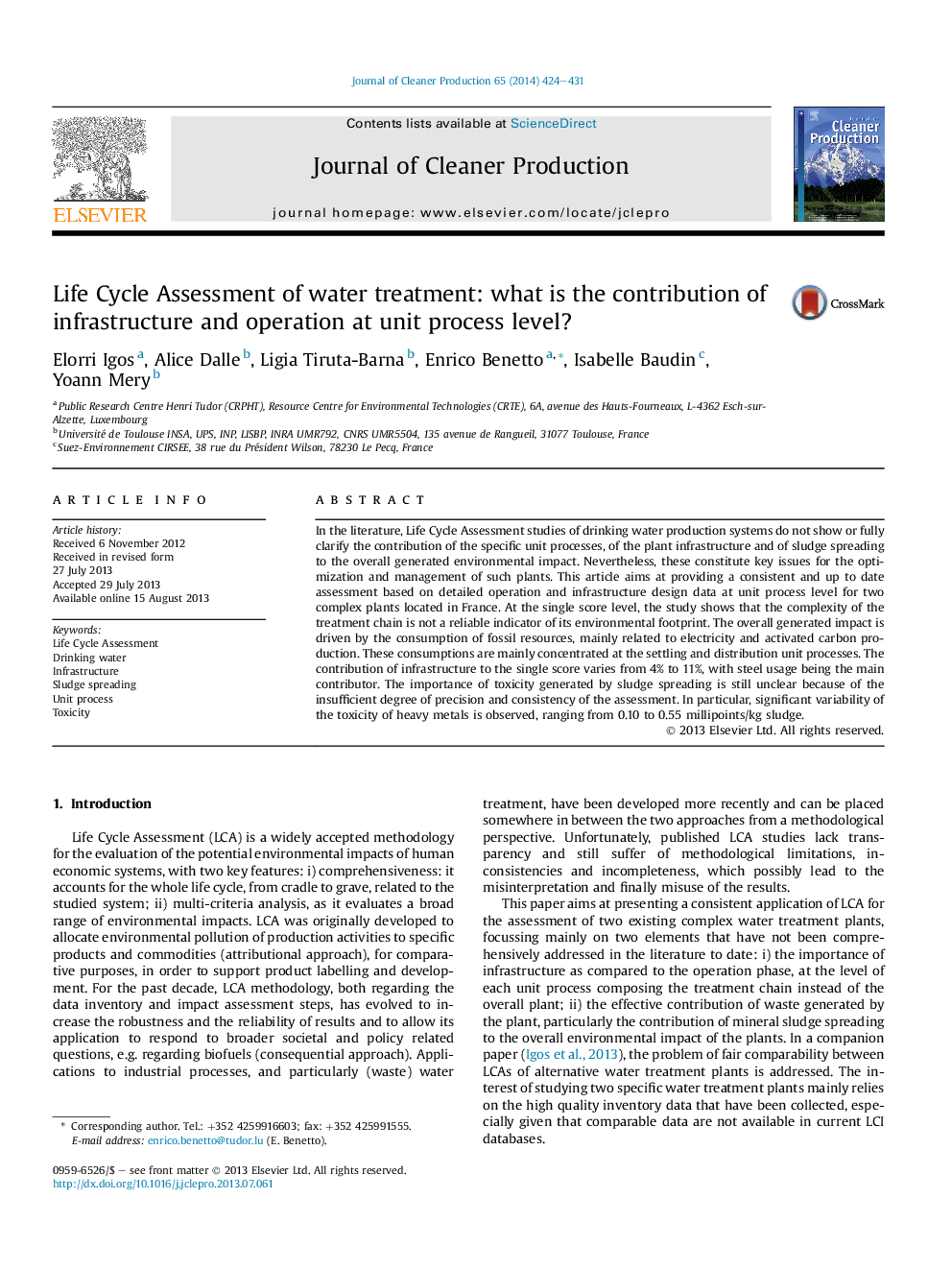| کد مقاله | کد نشریه | سال انتشار | مقاله انگلیسی | نسخه تمام متن |
|---|---|---|---|---|
| 8107021 | 1522181 | 2014 | 8 صفحه PDF | دانلود رایگان |
عنوان انگلیسی مقاله ISI
Life Cycle Assessment of water treatment: what is the contribution of infrastructure and operation at unit process level?
ترجمه فارسی عنوان
بررسی چرخه زندگی چگونگی تصفیه آب: سهم زیرساخت و بهره برداری در سطح فرایند واحد چیست؟
دانلود مقاله + سفارش ترجمه
دانلود مقاله ISI انگلیسی
رایگان برای ایرانیان
کلمات کلیدی
ارزیابی چرخه حیات، آب آشامیدنی، زیر ساخت، گسترش لجن، فرایند واحد سمی بودن
ترجمه چکیده
در ادبیات، مطالعات ارزیابی چرخه حیات سیستم های تولید آب آشامیدنی نشان می دهد که سهم واحد فرایندهای خاص، زیرساخت های کارخانه و گسترش لجن به تاثیر کلی محیط زیست تولید شده را کاملا نشان نمی دهد. با این وجود، این مسائل کلیدی برای بهینه سازی و مدیریت چنین گیاهان است. این مقاله با هدف ارائه یک ارزیابی سازگار و به روز با توجه به اطلاعات عملیاتی و اطلاعات طراحی زیرساخت در سطح فرآیند واحد برای دو کارخانه پیچیده واقع در فرانسه. در سطح نمره ی تک، این مطالعه نشان می دهد که پیچیدگی زنجیره ی درمان به عنوان شاخص قابل اطمینان از اثرات زیست محیطی آن نیست. تاثیر کلی تولید شده توسط مصرف منابع فسیلی، عمدتا مربوط به تولید برق و تولید کربن فعال است. این مصرف ها عمدتا در فرآیندهای واحد تنظیم و توزیع متمرکز می شوند. سهم زیرساخت ها در نمره ی تکمیلی از 4٪ تا 11٪ متغیر است، زیرا استفاده از فولاد اصلی اصلی آن است. اهمیت سمیت ناشی از انتشار لجن به دلیل عدم صحت و صحت ارزیابی کافی نیست. به طور خاص، تغییرات قابل توجهی از سمیت فلزات سنگین مشاهده می شود، اعم از 10 / 0-0 / 5-0 / 0 میلی لیتر / کیلوگرم لجن.
موضوعات مرتبط
مهندسی و علوم پایه
مهندسی انرژی
انرژی های تجدید پذیر، توسعه پایدار و محیط زیست
چکیده انگلیسی
In the literature, Life Cycle Assessment studies of drinking water production systems do not show or fully clarify the contribution of the specific unit processes, of the plant infrastructure and of sludge spreading to the overall generated environmental impact. Nevertheless, these constitute key issues for the optimization and management of such plants. This article aims at providing a consistent and up to date assessment based on detailed operation and infrastructure design data at unit process level for two complex plants located in France. At the single score level, the study shows that the complexity of the treatment chain is not a reliable indicator of its environmental footprint. The overall generated impact is driven by the consumption of fossil resources, mainly related to electricity and activated carbon production. These consumptions are mainly concentrated at the settling and distribution unit processes. The contribution of infrastructure to the single score varies from 4% to 11%, with steel usage being the main contributor. The importance of toxicity generated by sludge spreading is still unclear because of the insufficient degree of precision and consistency of the assessment. In particular, significant variability of the toxicity of heavy metals is observed, ranging from 0.10 to 0.55Â millipoints/kg sludge.
ناشر
Database: Elsevier - ScienceDirect (ساینس دایرکت)
Journal: Journal of Cleaner Production - Volume 65, 15 February 2014, Pages 424-431
Journal: Journal of Cleaner Production - Volume 65, 15 February 2014, Pages 424-431
نویسندگان
Elorri Igos, Alice Dalle, Ligia Tiruta-Barna, Enrico Benetto, Isabelle Baudin, Yoann Mery,
